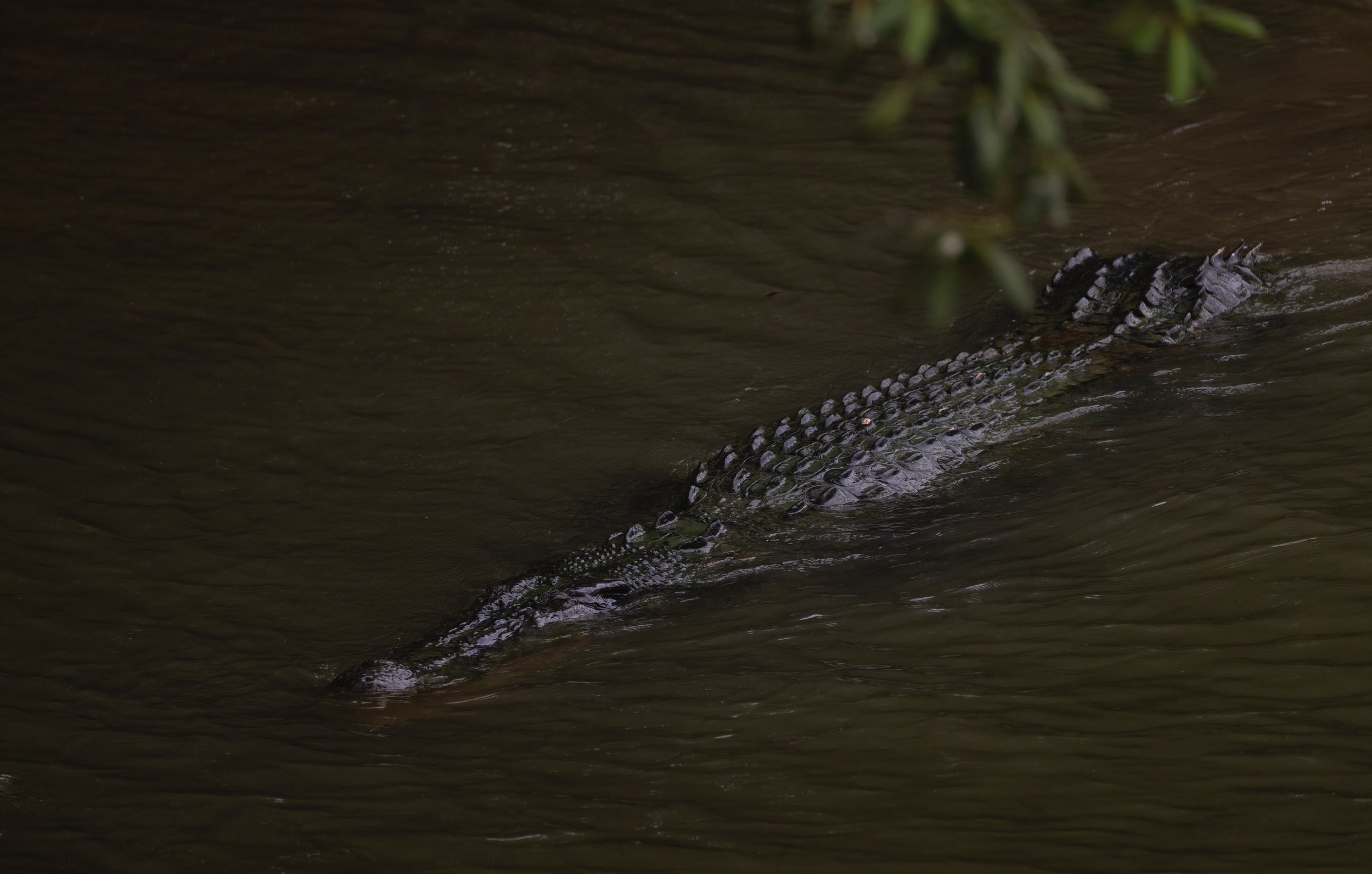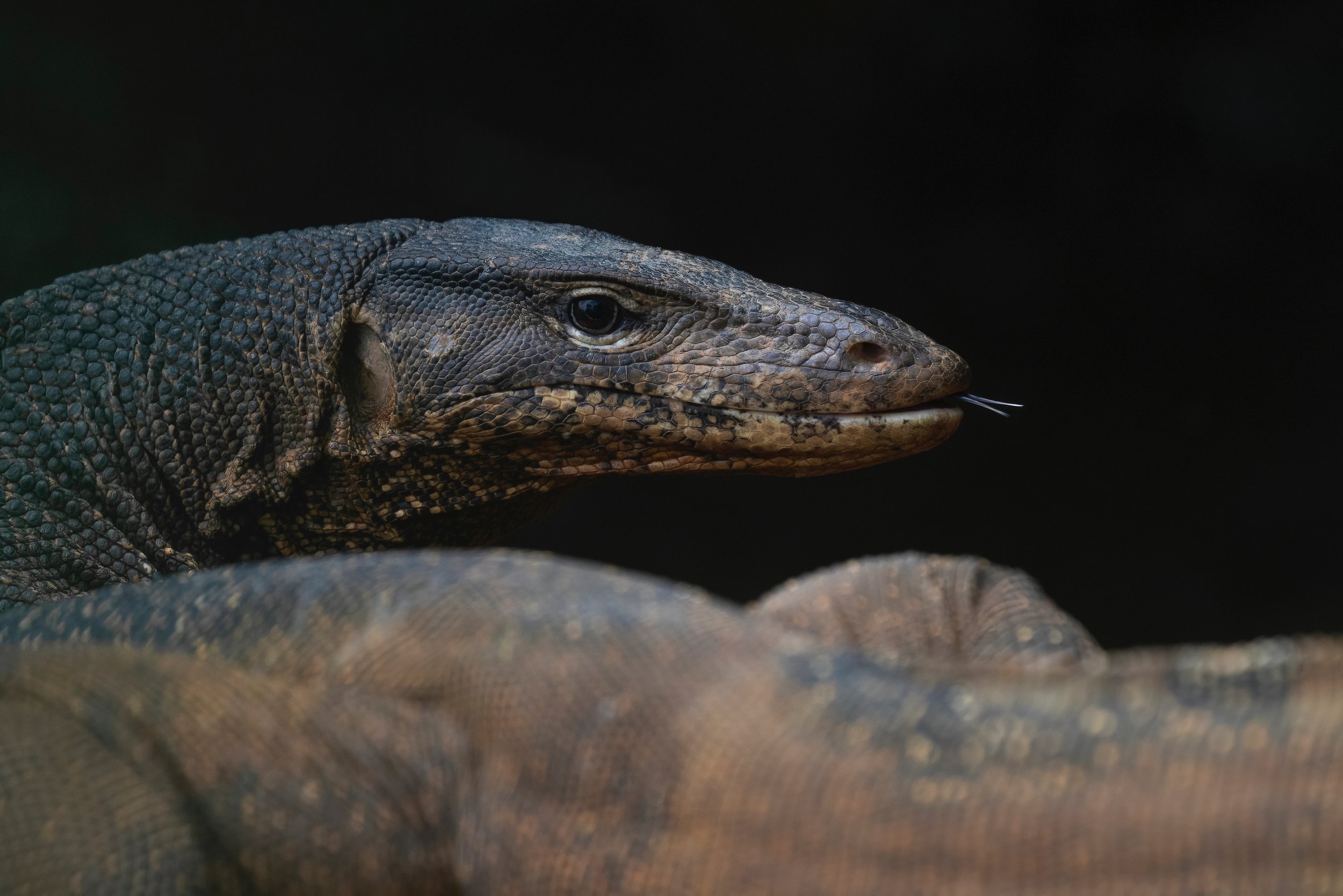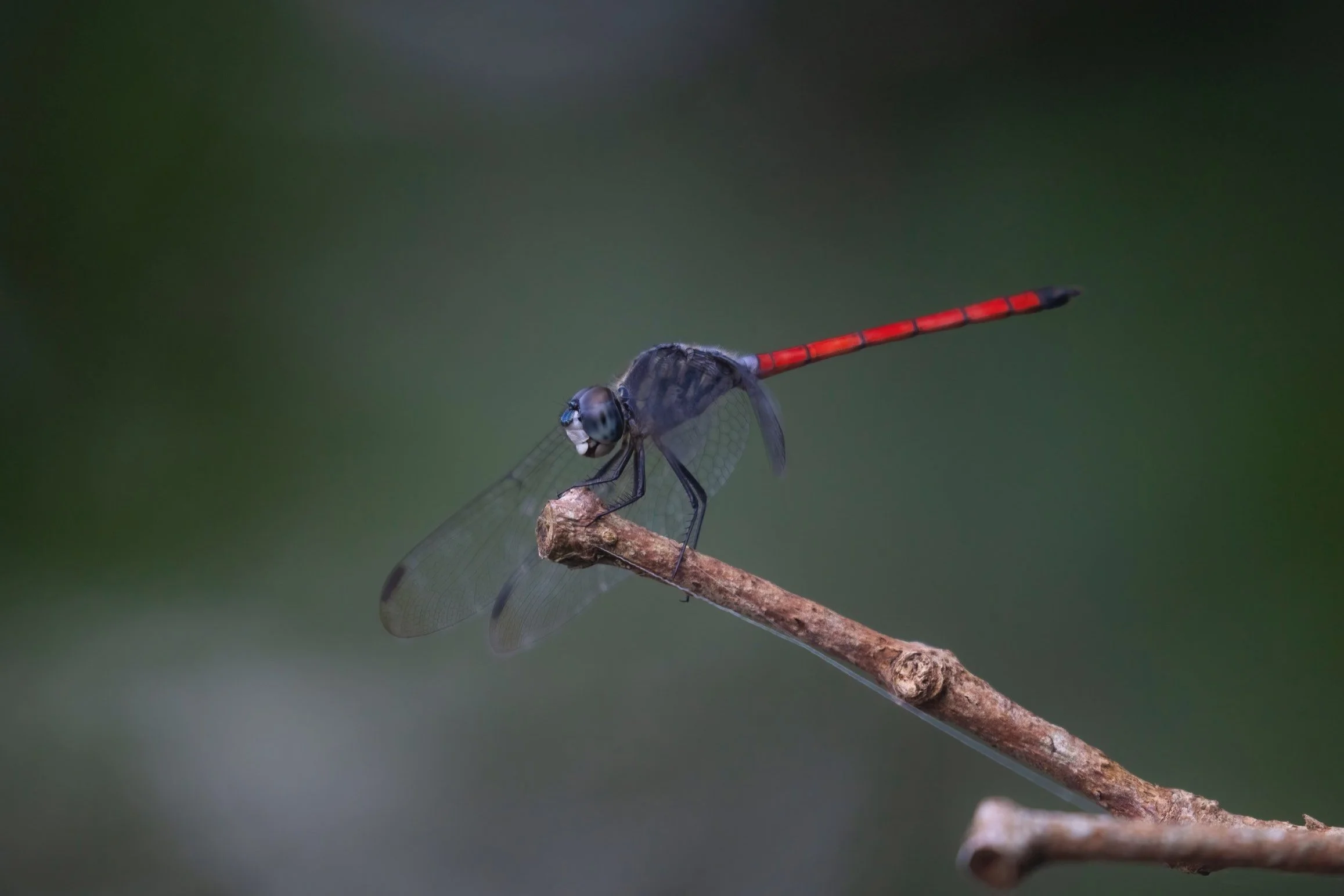Exploring Tropical Mangroves
Whilst wildlife might not be the first thing that comes to mind when you think of Singapore, the city-state actually contains several lush tropical forests and nature reserves teeming with life. During my winter visit, I had one location at the top of my life: Sungei Buloh Wetland Reserve. This site has only been treated as a protected reserve for a few decades, but has an remarkably rich and diverse wildlife population, and offers a unique opportunity to observe a number of exciting species up close and within reach of a bustling metropolis.
One of South East Asia’s most common reptiles, the Asian Water Monitor, was particularly interesting to me (as someone who comes from England, where giant lizards don’t stroll around city parks). Though a little smaller than komodo dragons, these hulking reptiles are otherwise superficially similar.
However, a much smaller lizard managed to steal my heart after gliding down from the canopy right before me. The turquoise face scales and bright-yellow throat flap make the Sumatran Flying Dragon a beautiful little animal, and it was a joy watching it use its peculiar means of avoiding the swampy forest floor.
Sticking with reptiles, Singapore hosts a few of SE Asia’s snakes. One, another gliding reptile, the Paradise Flying Tree Snake flattens and undulates its body to gracefully descend from the treetops.
The Mangrove Pit Viper, Paradise Flying Tree Snake and Oriental Whipsnake
The birdlife of this place was of course spectacular. Giant colourful kingfishers zoomed through the forest, often visible only as a flash of colour. The Stork-billed Kingfisher, an iconic Asian species, is easily identifiable from its enormous red bill, and the Collared Kingfisher, a specialist lizard-eater, could be seen darting from perch to perch looking for appropriately-sized victims. White-bellied Sea Eagles rule the skies above, though were nonetheless relentlessly pestered by Asian House Crows. Painted and Milky Storks plundered through the mud, and Sunbirds fluttered around the boardwalks, often to-and-from their suspended, pouch-like nests. And from the shadows, a truly special creature sat in wait; the Buffy Fish Owl, one of the few predominantly piscivorous owl species.




Stork Billed and Collared Kingfishers, the mighty White-bellied Sea Eagle and a Milky Stork
The stunning Copper-throated Sunbird
Buffy Fish Owl
The mangroves also gave me plenty of reason to stick my macro lens on. Curious jumping spiders, vibrantly-coloured dragonflies and a variety of butterflies were a frequent reminder to pay attention to the smaller inhabitants of the forest.
A selection of dragonflies: Grenadier, Yellow-striped Flutterer, Red Parasol and Great Crimson Glider
A classic South East Asian butterfly, the Blue Glossy Tiger, a pair of enormous Palmking and an Epocilla jumping spider
This habitat also provided me with perhaps two of the strangest animals I’ve ever encountered. Mudskippers, amphibious fish with specialised pectoral fins that allow terrestrial locomotion, and Horseshoe Crabs, so-called ‘living fossils’ due to their relatively static evolution since their emergence in the Triassic. The large roosting colony of Lesser Short-nosed Fruit Bats in the Sungei Buloh visitors centre is also definitely worth going to see.
And last, but very far from least, Singapore’s most fearsome and controversial resident, the Saltwater Crocodile. Alongside being the largest living reptile and having the most powerful bite in the animal kingdom, Saltwater Crocs are notorious in this part of the world for their occasional conflict with humans. Some of the crocs come and go (and have actually been known to traverse the ocean between Singapore and Australia!), but others are resident to Sungei Buloh and are affectionately known to regular visitors. For example, the aptly-named ‘Stumpy’ is commonly seen and obviously identified by the swollen lump at the base of his missing tail, a wound presumably caused by a fight with one of his brethren.
I’d recommend visiting Sungei Buloh purely to see saltwater crocodiles, even if you have very little interest in wildlife. They are an incredible sight to behold, and photographing them was easily the highlight of my holiday.





Saltwater Crocodiles, including one in possession of an unlucky Sharptooth Catfish…





















